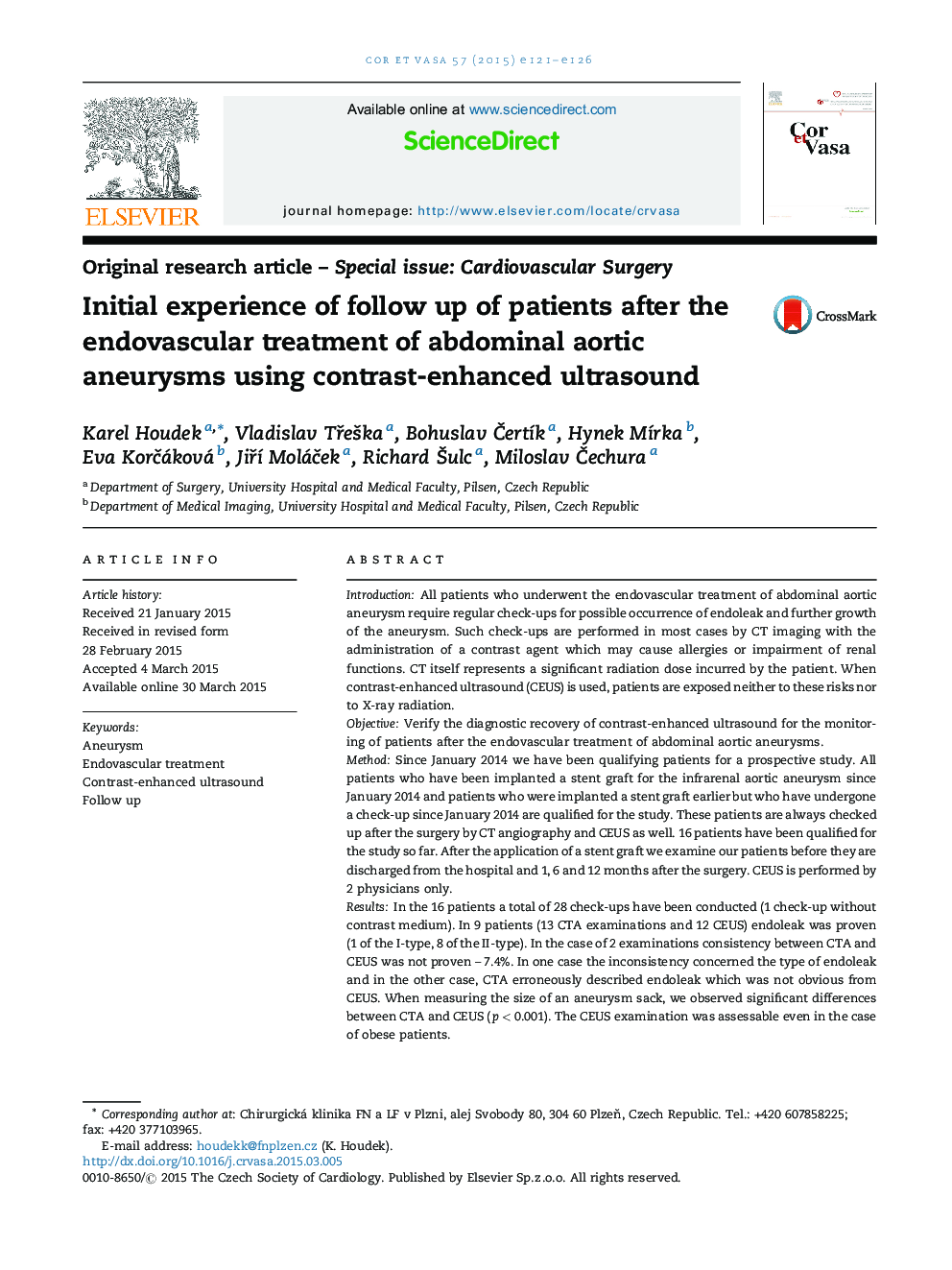| Article ID | Journal | Published Year | Pages | File Type |
|---|---|---|---|---|
| 2728398 | Cor et Vasa | 2015 | 6 Pages |
IntroductionAll patients who underwent the endovascular treatment of abdominal aortic aneurysm require regular check-ups for possible occurrence of endoleak and further growth of the aneurysm. Such check-ups are performed in most cases by CT imaging with the administration of a contrast agent which may cause allergies or impairment of renal functions. CT itself represents a significant radiation dose incurred by the patient. When contrast-enhanced ultrasound (CEUS) is used, patients are exposed neither to these risks nor to X-ray radiation.ObjectiveVerify the diagnostic recovery of contrast-enhanced ultrasound for the monitoring of patients after the endovascular treatment of abdominal aortic aneurysms.MethodSince January 2014 we have been qualifying patients for a prospective study. All patients who have been implanted a stent graft for the infrarenal aortic aneurysm since January 2014 and patients who were implanted a stent graft earlier but who have undergone a check-up since January 2014 are qualified for the study. These patients are always checked up after the surgery by CT angiography and CEUS as well. 16 patients have been qualified for the study so far. After the application of a stent graft we examine our patients before they are discharged from the hospital and 1, 6 and 12 months after the surgery. CEUS is performed by 2 physicians only.ResultsIn the 16 patients a total of 28 check-ups have been conducted (1 check-up without contrast medium). In 9 patients (13 CTA examinations and 12 CEUS) endoleak was proven (1 of the I-type, 8 of the II-type). In the case of 2 examinations consistency between CTA and CEUS was not proven – 7.4%. In one case the inconsistency concerned the type of endoleak and in the other case, CTA erroneously described endoleak which was not obvious from CEUS. When measuring the size of an aneurysm sack, we observed significant differences between CTA and CEUS (p < 0.001). The CEUS examination was assessable even in the case of obese patients.ConclusionWe have observed a 100% consistency in the result of 25 examinations which used both methods. Based on the comparisons between CEUS and CTAG performed so far, CEUS seems to be a reliable method which could be used within the framework of dispensary care for patients after endovascular aneurysm repair (EVAR). CEUS seems to be sensitive enough to detect endoleak. However, to be able to provide a reliable evaluation, a larger set of patients and longer-term experience are needed, specifically for the evaluation of the aneurysm sack size.
